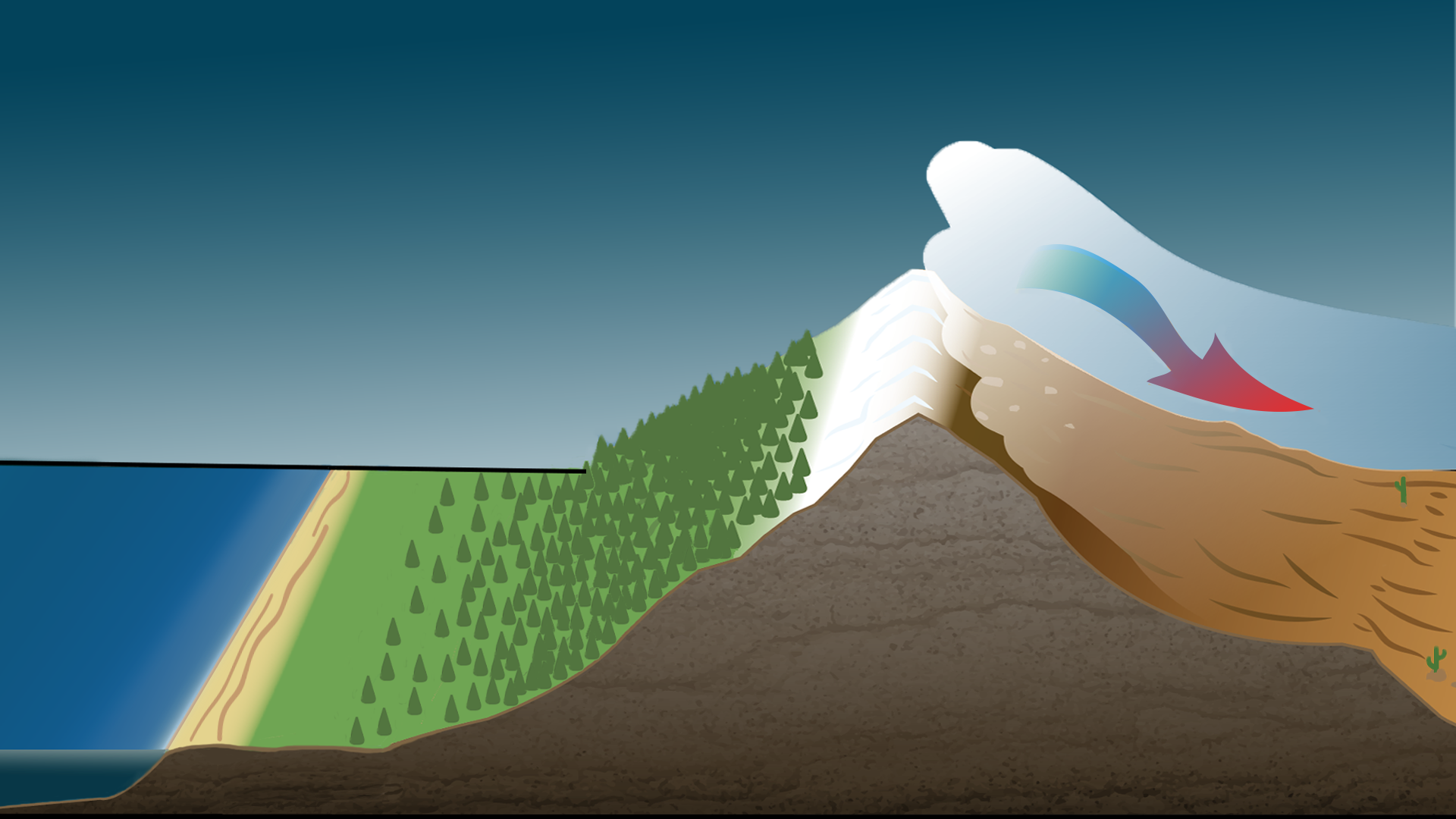Summit and Descent
With most of its moisture removed due to precipitation, the air now passes over the summit of the mountain range and begins to descend on the other side.
At lower levels in the atmosphere, the air pressure is greater because more molecules in the air press down from above.
As the air descends, the molecules that make up air are forced closer together and rapidly gain energy, increasing the temperature. The air—by now very dry—becomes warmer as it continues to move down the mountain range.


